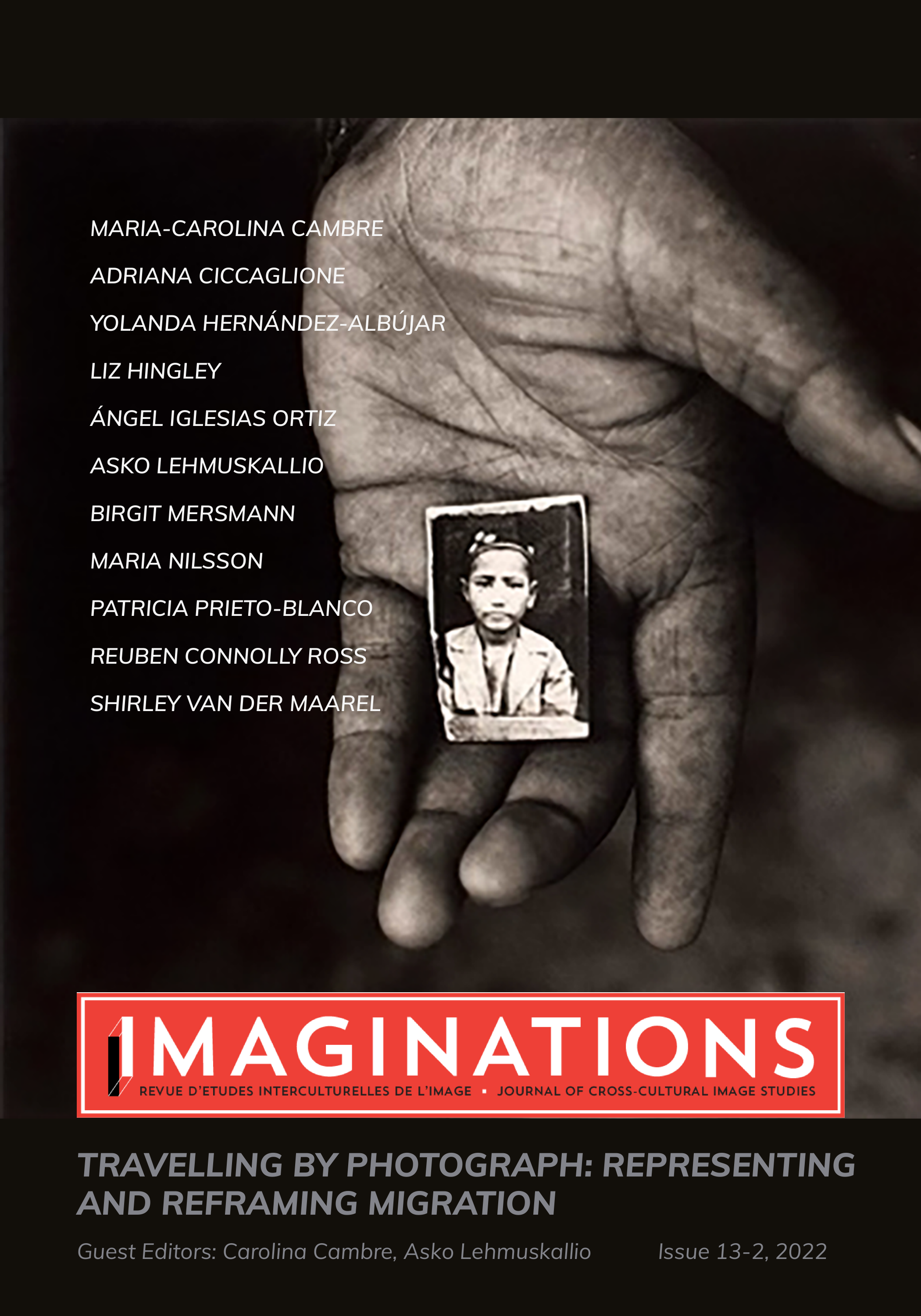A Key to Home: Illuminating the Role of the SIM Card in Refugee Resettlement
DOI:
https://doi.org/10.17742/IMAGE.TP.13.2.5Abstract
This paper considers how creative research mediated by mobile devices might contribute to upending inherited notions of refugee powerlessness and passivity in galleries and museums. A collaborative project, undertaken in 2019, explored the significance of SIM cards in forging a sense of security, identity, and belonging for Syrian refugees on a resettlement program in the U.K. This “opening up” the “body” of the smartphone in the process of creating artworks reveals the urgent need for deeper appreciation of the meaning and materiality of personal digital ecosystems (Blanke & Pybus 2020) for refugees negotiating a sense of home.References
Alam, K., and Imran, S. “The Digital Divide and Social Inclusion among Refugee Migrants.” Information Technology & People, 2015.
Blanke, T., and Pybus, J. “The Material Conditions of Platforms: Monopolization Through Decentralization.” Social Media+ Society, vol. 6, no. 4, 2056305120971632.
Chouliaraki, L., and Stolić, T. “Photojournalism as Political Encounter: Western News Photography in the 2015 Migration ‘crisis’.” Visual Communication, vol. 18, no. 3, 2019, pp. 311-331.
Conradson, D., and McKay, D. “Translocal Subjectivities: Mobility, Connection, Emotion.” Mobilities, vol. 2, no. 2, 2007, pp. 167-174.
Felsberger, S. and Subramanian, R., eds. Mobile Technology and Social Transformations: Access to Knowledge in Global Contexts. Routledge, 2021.
Frosh, P. The Poetics of Digital Media. John Wiley & Sons, 2018.
Gillespie, M., Ampofo, L., Cheesman, M., et al. “Mapping Refugee Media Journeys: Smartphones and Social Media Networks.” Research Report. The Open University/France Medias Monde, 2016, pp. 1-104.
Griffith, P., and Mackela, P. “Local Migration Panel: Coventry.” Institute for Public Policy Research. Retrieved from https://www.ippr.org/files/2019-05/lmp-coventry-aug18.pdf.
Hayes, J. “Trajectories of Belonging and Enduring Technology: 2G Phones and Syrian Refugees in the Kurdistan Region of Iraq.” European Journal of Communication, vol. 34, no. 6, 2019, pp. 661-670.
Ingold, T. Making: Anthropology, Archaeology, Art and Architecture. Routledge, 2020.
Leung, L., Finney Lamb, C. and Emrys, L. Technology’s Refuge: The Use of Technology by Asylum Seekers and Refugees. 2009, p. 54.
Leurs, K., & Smets, K. “Five Questions for Digital Migration Studies: Learning from Digital Connectivity and Forced Migration in (to) Europe.” Social Media + Society, vol. 4, no. 1, 2018, 2056305118764425.
Lupton, D. “How do Data Come to Matter? Living and Becoming with Personal Data.” Big Data & Society, vol. , no. 2, 2018, 2053951718786314.
McKay, D. “‘Sending Dollars Shows Feeling’–Emotions and Economies in Filipino Migration.” Mobilities, vol. 2, no. 2, 2007, pp.175-194.
Parks, Lisa. “Earth observation and signal territories: Studying US broadcast infrastructure through historical network maps, Google Earth, and fieldwork.” Canadian Journal of Communication 38.3 (2013): 285-307.
Taylor, L. “No Place to Hide? The Ethics and Analytics of Tracking Mobility Using Mobile Phone Data.” Environment and Planning D: Society and Space, vol. 34, no. 2, 2016, pp. 319-336.
Thomas, W. I. and Znaniecki, F. The Polish Peasant in Europe and America: A Classic Work in Immigration History. University of Illinois Press, 1996.
Uimonen, P. Digital Drama: Teaching and Learning Art and Media in Tanzania. Routledge, 2013.
World Health Organization. Transformative Accountability for Adolescents: Accountability for the Health and Human Rights of Women, Children and Adolescents in the 2030 Agenda. World Health Organization, 2017.
Yuval-Davis, N. The Politics of Belonging: Intersectional Contestations. Sage, 2011.
Downloads
Published
How to Cite
Issue
Section
License
Copyright (c) 2022 Liz Hingley

This work is licensed under a Creative Commons Attribution-NonCommercial-NoDerivatives 4.0 International License.

This work by https://journals.library.ualberta.ca/imaginations is licensed under a Creative Commons 4.0 International License although certain works referenced herein may be separately licensed, or the author has exercised their right to fair dealing under the Canadian Copyright Act.




